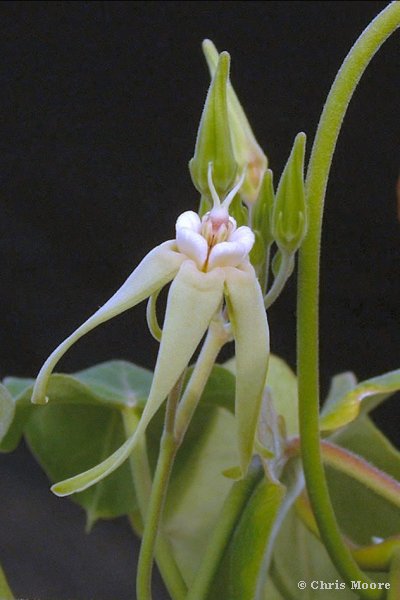

| stapeliads.net :: | Home | Site map | Documents | Forum | PAN | SI Database | Contact us | Guide | About us |

| Chris Moore the International Asclepiad Society introducing the IAS and its services Document Revision 1.0 First Edited December, 16th, 2004 Reads : 4423 |
Alf Woodward and a small band of fellow enthusiasts in England founded the International Asclepiad Society (IAS) in 1976 to bring together those interested in studying and growing plants of the family Asclepiadaceae.
This is a large family of plants and initially interest focused mainly on the succulent genera such as Stapelia, Caralluma, Orbea, Huernia and the other Stapeliads, together with Ceropegia, Brachystelma, etc. As time has gone by and more and more species have come into cultivation, the scope of the Society has widened to include Raphionacme, Hoya, Dischidia and the non-succulent genera such as Asclepias and Oxypetalum; indeed it is our intention not to neglect any member of the family. In 2000 the family Apocynaceae was added to the scope of the Society, in keeping with the latest taxonomical thinking. The main focus of attention is on Adenium and Pachypodium, but articles on the other genera in the family are welcomed.
Whilst the Management Committee of the Society is still predominantly based in the United Kingdom, membership of the Society now totals over 450 and has spread to over 40 countries around the globe, with National Representatives based in Australia, France, Germany, Holland, Italy, New Zealand, Slovenia, South Africa, Spain, USA, Scandinavia and Zimbabwe. This multinational membership greatly enhances the exchange of information via the Society's widely acclaimed journal Asklepios, which is published three times per year. All of the leading authorities in both taxonomy and field exploration are members of the Society and regularly contribute articles to the journal. As many species as possible are illustrated with line drawings and an increasing number of coloured plates. Articles cover everything from descriptions of plants, both in the field and in cultivation, to more detailed problems of plant identification and ecology. Also featured are articles on pests and diseases, cultivation and propagation.
With regards to propagation, the Society operates a Seed Bank, which issues three lists a year; these lists are available to members only and are obtainable on request from the Seed Bank Secretary (Tim Marshall). The first list is normally issued in January, with a second list in April/May (Spring in the Northern Hemisphere) and a third list in August/September (Spring in the Southern Hemisphere). In this way seed is made available in the freshest possible condition. All of the seed offered comes from donations by members and features both controlled and open greenhouse pollinations, and habitat collections. All the seed is sold at a minimum price to cover costs and is probably the finest distribution of Asclepiad seed available. The Seed Bank has been responsible over the years for introducing a number of rarities into cultivation such as Oxypetalum banksii from Brazil pictured here

The Society also has both a Slide Bank and Library, covering in the main Stapeliads and Ceropegiads. Duplicate copies can be obtained at cost price from the librarians, but for copyright reasons these services are available to members only for personal research. With over 2000 slides and a larger number of papers the Society enables members to access a vast wealth of information.
In addition to Asklepios the Society also publishes a number of booklets and checklists and, in collaboration with our sister G erman Society, IG Ascleps, has produced a CD Set with over 2700 pictures of Asclepiads, which is proving to be an invaluable aid to identification.
Further information on contacts, membership rates, etc., including a secure on-line subscription service, can be found by visiting the Society own web page at http://www.asclepiad-international.org.